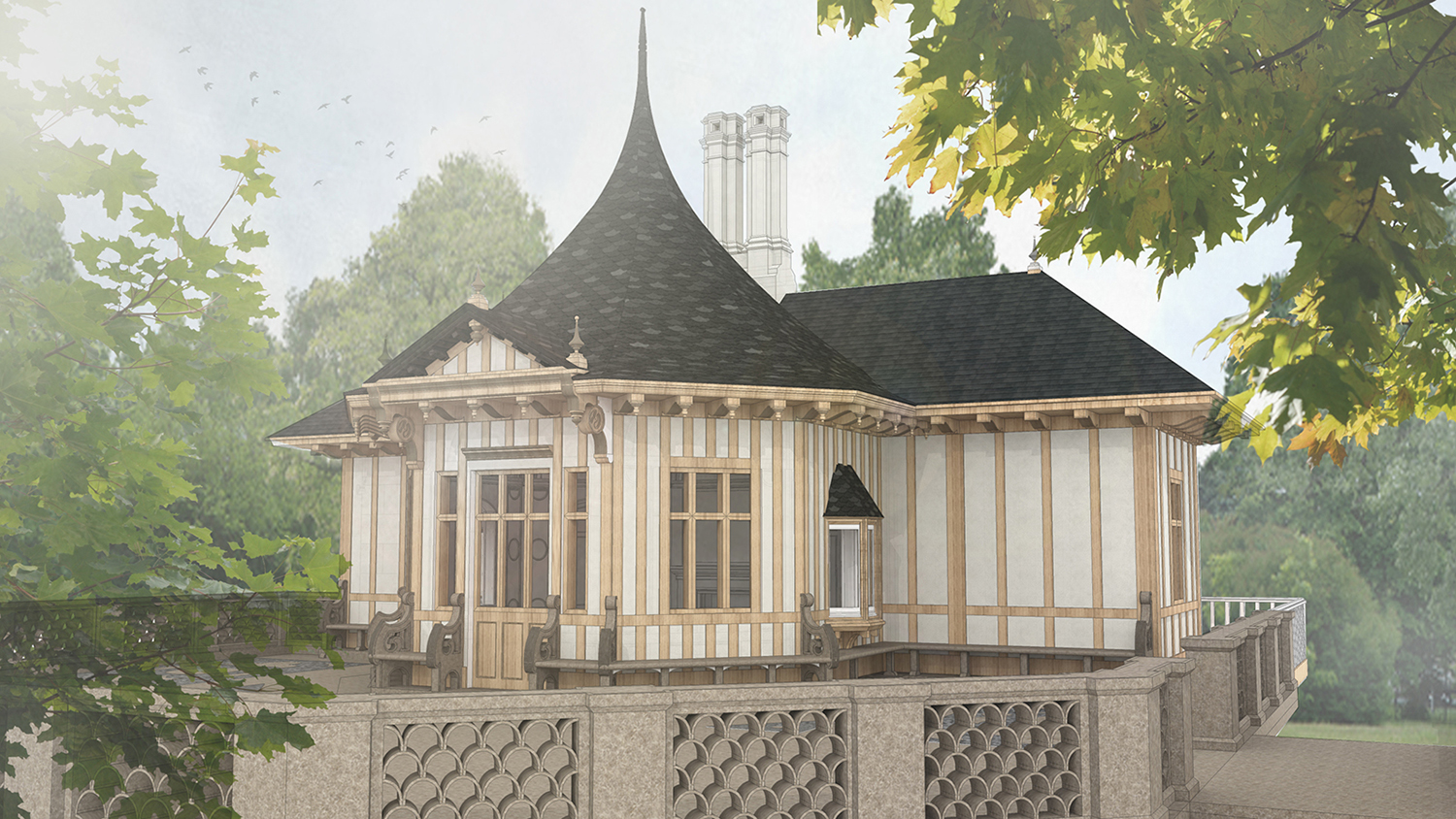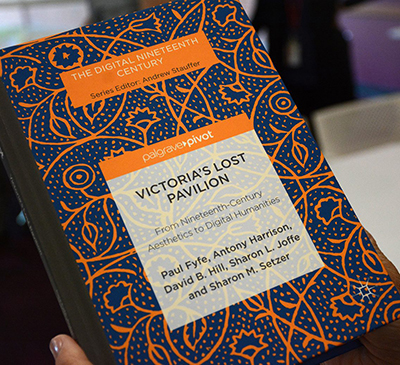Exploring Queen Victoria’s Lost Garden Pavilion in 3D

Editor’s Note: This is a guest post by Nash Dunn, a writer in NC State’s College of Humanities and Social Sciences.
An interdisciplinary team of NC State researchers has virtually reconstructed a lost piece of history. Using clues from historical documents and other materials, scholars from English, design, communication and other areas across campus teamed up to create a 3D virtual model of Queen Victoria’s Buckingham Palace garden pavilion.
Built in the 1840s, the pavilion was a home for artistic experimentation and featured paintings, designs and furnishings from more than a dozen of the best-known artists and craftsmen of the mid-19th century. While the structure was destroyed in 1928, scholars and the public can now explore the pavilion anew through the team’s Victoria’s Lost Pavilion project. (You can view the pavilion project yourself here.)
The project revolves around the interactive 3D model that allows users to tour the pavilion inside and out. Users can take a virtual walk through the building on their desktop computers, and use keyboard and mouse controls to open doors, take a look around and click surfaces to view historical notes. They can also explore the model through a five-minute “fly around” video, a panoramic sphere and a mobile app. For the project launch earlier this fall, the research team also created a virtual reality experience, in which visitors could immerse themselves in the pavilion.

In addition to those web-based offerings, the project team also co-authored a new book about the pavilion’s history and the digital restoration effort. Victoria’s Lost Pavilion: From Nineteenth-Century Aesthetics to Digital Humanities (Palgrave Macmillan, 2017) is the first title in a new “Digital Nineteenth-Century” series. The book examines the pavilion’s social, political and architectural histories and representations; it also details how the team built the 3D model and situates the project among other digital humanities research.
The project began with a conference paper about a specific group of paintings in the pavilion. However, it quickly morphed into a larger interdisciplinary initiative to reconstruct the building and enhance its availability to other researchers and the public.
Team members brought expertise from their respective fields to the project. Department of English scholars, for example, explored the pavilion’s connections to 19th century British literature and cultural practices, particularly related to art history and museum culture, aesthetics and taste, literary history and politics. As for the virtual reconstruction, faculty and graduate students from the School of Architecture used topographical and architectural information to create models, illustrations and virtual reality environments in several software applications. Team members from communication, computer science and NCSU Libraries also helped shape the project’s web presence.
The full project team includes:
- Paul Fyfe, associate professor of English.
- Tony Harrison, distinguished professor and head of the Department of English.
- David Hill, professor of architecture and head of the School of Architecture.
- Christopher Isley, recent alumnus of the M.A. in architecture program.
- Sharon Lynne Joffe, adjunct teaching associate professor of English.
- Andrew McCall, recent alumnus of the M.A. in architecture program.
- Keon Pettiway, recent alumnus of the Communication, Rhetoric and Digital Media doctoral program and an assistant professor of communication at Eastern Michigan University.
- Sharon Setzer, professor of English.
- Vamsi Vikash, recent alumnus of the M.S. in Computer Networking and Telecommunication program.
- Lauren Woodard, recent alumna of the College of Design.
- Markus Wust, digital research and scholarship librarian at NCSU Libraries.
For more information or to tour the pavilion, visit pavilion.chass.ncsu.edu.
- Categories:


